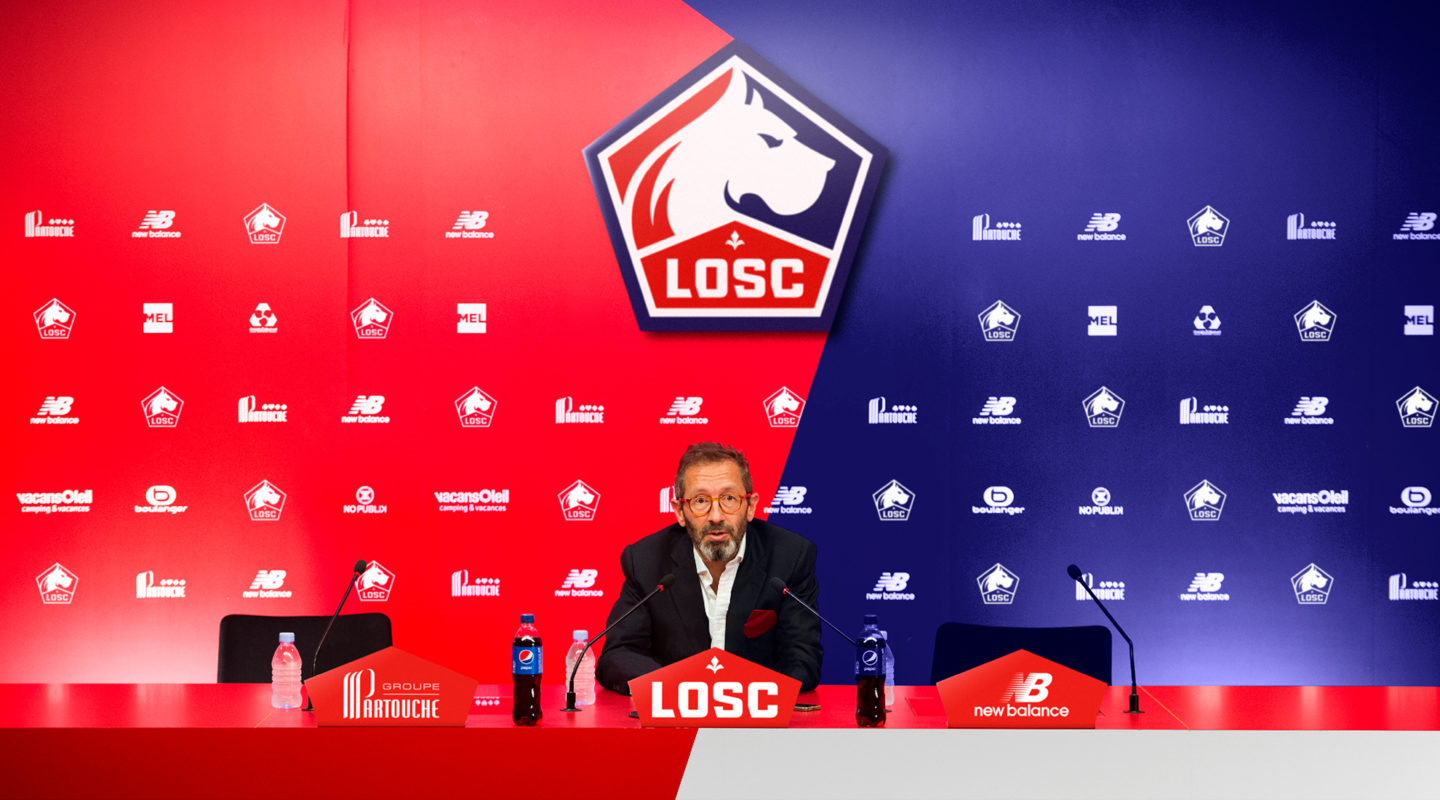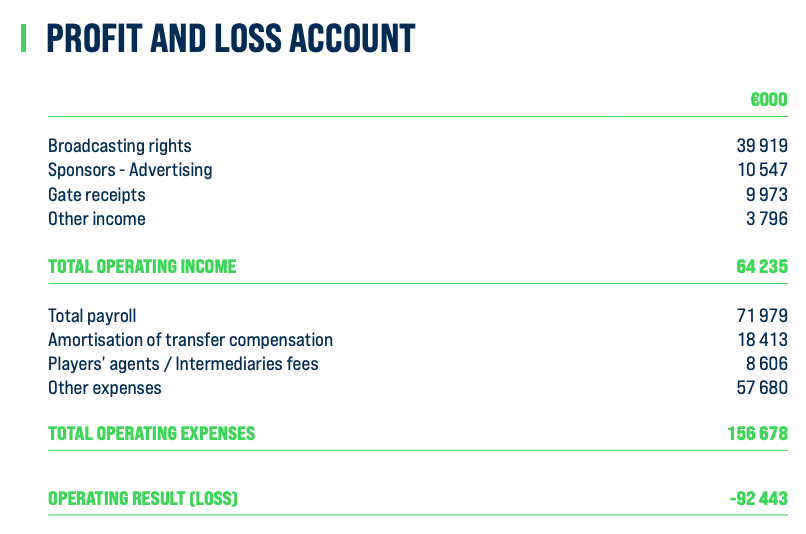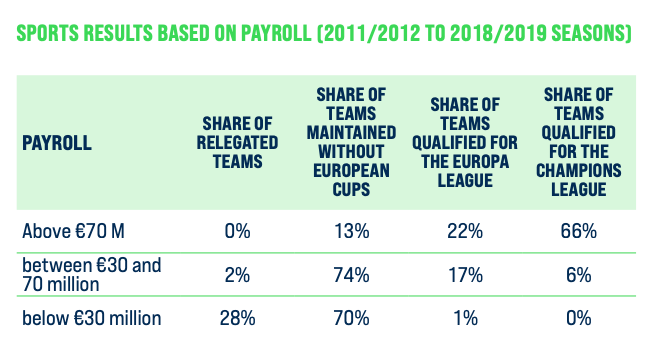Lille Part 2: Club Finances

As I mentioned in Part 1 of the series, Lille OSC has new owners, C-Level staff, and have something interesting and exciting in football: a blank slate. The club is in a rough spot financially, and have over $140 million in debt to their now-owners, Elliott Management. In the previous article I created a club ethos, which is a great way to build a strategy for your club that is rooted in its history and city. The club ethos for Lille OSC is “Préparé à Tout Changement - Prepared For Any Change.” To read more about the club ethos and how I got to it, read here. Funnily enough, this ethos is a great segway into what we’ll be looking into today: LOSC’s potential financial future.
“Les Dogues” are in financial trouble. Their past financial model was based on player sales offsetting their big amounts of cost and financing liabilities (money they’ve borrowed to finance things). It’s bad practice to have high costs and borrow a lot of money and the final nail in the coffin was to bank on something as volatile as the transfer market to pay off those bad decisions. Let’s dive into their financials relatively quickly. The implications and planning for the future is much more interesting, so I’ll try to be quick. Based on the 2018/19 club report by the Direction Nationale du Contrôle de Gestion, or DNCG, here are Lille’s income and costs. I’ve not included any transfer-related income or cost for simplicity’s sake. For example, even with Lille OSC making a €53.8 million profit from selling their best players, their year end loss was around €66.5 million. I'll be evaluating their squad and recruitment strategy in parts 3 and 4.

If we look at the 2018/19 league report we can see Lille are:
- 8th in Broadcasting (behind clubs playing in Europe)
- 12th in Sponsors/Advertising
- 4th in Gate Receipts (behind the big 3 of PSG, Lyon, and Marseille)
- 5th Highest in Total Payroll (behind the usual suspects)
- Highest ratio of other costs to total cost in the league at 44%
The two most glaring things from both reports is that Lille are 12th in sponsorship and advertising, despite having the 4th biggest metropolitan area and largest stadium in France, and that they have the highest ratio of “other expenses” to total cost out of anyone in Ligue 1. Other costs can be many different things like, but not exclusive to, purchasing of supplies or materials, purchasing of products to sell, paying for an external service, cost of firing a coach, and/or paying transfer bonuses based on past agreements, from my understanding.
There are implications with these numbers, but first we must take a look at an interesting analysis by the DNCG. The DNCG found there were three different groups of teams. One: having a payroll above €70 million, two: having a payroll between €70 and €30 million, and three: having a payroll below €30 million. The “payroll” is defined as the compensation for all employees at the club. For what it’s worth, on average, about 68% of the total payroll is for player salaries. What’s interesting about this study is that they found the percentage of time each group ended up in a certain spot in the table. The spots being, Champion’s League qualification, Europa League qualification, mid-table, or relegated. We can see the results below. For me, this is great because as an analyst I work in probabilities and it can help me predict future outcomes over time easier.

Based on what we know, with the club having a payroll over €70 million, you’d expect Lille to make the Champions League two out of three years. However if we maintain their total costs of about €130 million, there’s no possible way financially to break even. In fact, they’d lose about €30 million a year even with Champions League money. Furthermore, let’s say we reduce the “other expenses” to about the league average of 31% of the total costs. That reduces costs by about €25.6 million and has the club losing €5 million every year. Lastly, because teams with a payroll of over €70 million make the Champions League two out of three years, they’d lose about €27.6 million in Champions League broadcast money for that year, and, in total, lose about €37 million over those three years. Clearly, reducing costs isn’t enough and they need to increase income.
I’ve run the numbers and, for the sake of attempting to make this article as short as possible, the only way for the club to be financially stable while playing in the Champions League is to improve their merchandise, food services, and sponsorship/advertising money by 50%. Additionally, they’d need to improve their 66% capacity rate within their stadium to about 92%. Honestly, those are all tough tasks to be done over a year and I’d not be overly keen on burning money until those standards are met. What I’d look to do is create a 3-Phase plan emphasizing different areas and Phase 1 would be around financial stability. Lille should immediately look to reduce costs while simultaneously focusing on improving income streams. This would give them a good base to grow as a club.
First, they need to reduce costs to the current income levels. That means reduce the payroll from €72 million to €44 million and reducing “other expenses” to 31% of the new total expenses, which is around €20 million. How I’d look to do it is reduce the costs mostly around the 1st team because of the big revenue-generating ask the other staff members have. The player payroll would be reduced by 50% to about €26 million, maintain the academy cost, and reduce all other staff cost by 10% to about €15.5 million. I know this news may be terrible for Lille fans, but when you’re in this much debt you need financial stability and it wouldn’t be surprising if cuts will actually happen in the future. That being said, the club CAN grow if more revenue is created.
In terms of generating revenue, here are some thoughts:
Sponsorship: Now, I won’t claim to be an expert on sponsorship but I do have a year of experience as a Sponsorship Rep at a community soccer club. My plan of action there was to understand who we were as a club, understand who our customers were, and create an extensive menu which our sponsorship partners could choose from to fit into their needs. Put simply, we helped our sponsors gain value however they wanted. The result of my work was an increase in sponsorship revenue of 300%. Again, this is on a much smaller scale, but I hope I’ve made my point.
Luckily for us, we already have the first step of understanding who Lille is as club finished - Part 1 of the series. Understanding Lille as a whole, from demographics, psychographics, buying tendencies, and plenty of other data would take awhile and require extensive research. That being said, the goal is to create “personas” and understand who they are, a day in their life, touch points, and pain points for them. That way, with this information, we can communicate that to our potential sponsorship partners to see if these are the type of people they want to connect with. Lastly, creating that sponsorship menu requires first-hand access to Lille and their resources, so it’s impossible for me to know everything that they could provide. It could include branded luxury boxes, advertising space, giving discounts to a sponsor’s store, etc.
Gate Receipts: When it comes to gate receipts, Lille is actually doing okay in the grand scheme of things. They’re only behind the big three and generate quite a bit of revenue. However, they still only fill their stadium by 66% - a very low number for football stadiums. I truly believe LOSC can generate more in revenue by focusing on what the city of Lille has going for it: transportation.
What’s great about Lille is that the city gets around 30.8 million people using their international airport and train stations a year. What if we get some football tourists to come watch some games for a holiday? I mean, London gets about 1 million football tourists a year and they get over 116 million people using their international airport and train station every year. That’s about 0.86% of people coming to see a game. So, why can’t LOSC strive for the same?
Realistically speaking, Lille won’t get the same level of interest because London has a variety of Premier League teams that are huge on a global scale to choose from. However, what if LOSC goes for, say, 0.5% of the passengers? That’s an additional 154,000 people seeing a match and would generate about €2.3 million.
What’s important to note, and may be beneficial in helping with this cause, is the amount of connections Lille has to other countries, especially Belgium, Holland, Algeria, and Morocco. A lot of the connections via their train station are through Belgium, but Holland is a good addition. Algeria and Morocco have 90 and 43 flights a year to the Lille international airports, respectively. In short, what if Lille focus their efforts on signing some players from those regions to help boost the interest of the club from those countries? It could be an interesting strategy and may be very beneficial. Plus, who knows, maybe they’ll buy some merchandise at my proposed new store location of inside the airport? Maybe they create a bus service from the airport to the stadium, as well?
To wrap things up, Lille OSC is currently burning tons of cash, desperately need to cut costs, and boost revenue. Going forward, they need to cut player wage costs and other costs drastically to be in line with their current revenues. There are opportunities for revenue growth by focusing on sponsorship and gate receipts. The size of Lille and their international connection should lend itself to creative ways to help drive revenue through those channels, especially with football tourists coming from Belgium, Algeria, and Morocco. It’d be a tough few years, but LOSC should be Prepared For Any Change.
With these changes in mind, stay tuned for Part 3 of the series where I look to evaluate their current squad. Needless to say, it’ll be a big ask to reduce the wages by 50% but I’ll do my best to make it work while making “Les Dogues” competitive.
Lastly, I’d like to say obviously a more in depth financial analysis would be much more comprehensive but I wanted to give a general understanding in a quick and easy to understand way while providing potential solutions.
This concludes Part 2 on evaluating Lille OSC’s finances. To read the other parts, the links will be below as they get posted to the website.
Part 1 Part 3 Part 4
I encourage you to check out my consulting page, here, and sign up for my newsletter, here.
